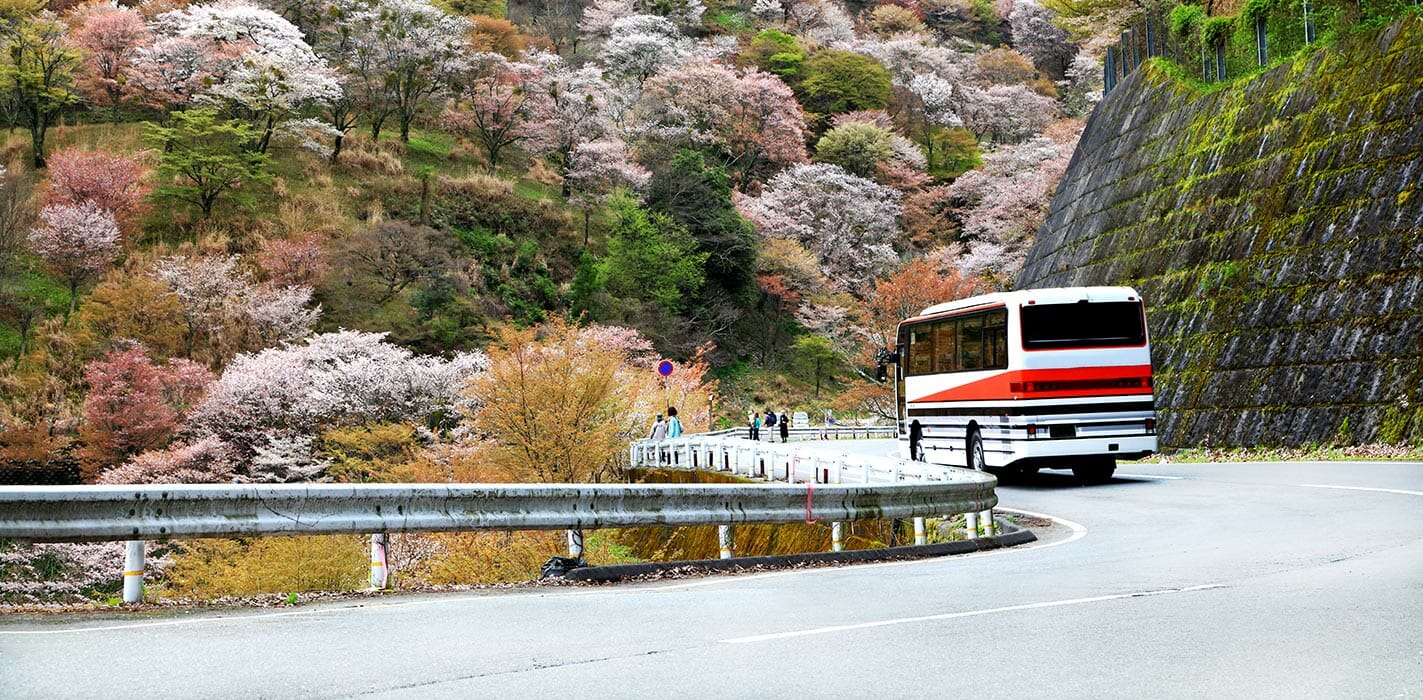The idea of getting somewhere in record time and making the journey on a Bullet Train is very appealing, but when traveling around Japan, going by train is not the only option. Bus travel is actually a great alternative to the train. Yes, it may be slower, but it can be significantly cheaper than the Shinkansen, and it has the benefit of being able to go places that the trains cannot. Japan’s highway bus network is very extensive, and there are some very good companies operating hundreds of different routes. When the train is too expensive, or you can’t get to where you want to go by train, traveling by bus in Japan is an excellent alternative.
Read about:
• Types of Buses in Japan
• Long-Distance Highway Buses
• Japan Bus Travel Ticket Types
• Where to Buy Your Tickets for Bus Travel in Japan
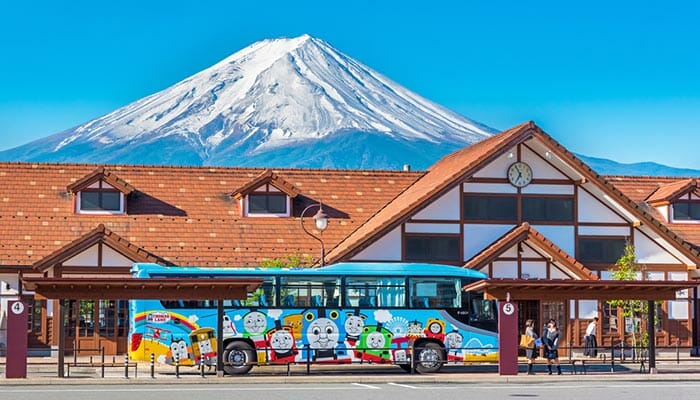
Is Taking the Bus Safe in Japan?
Japan, as a whole, is a very safe country, with low crime rates and where tourists, in general, feel safe and welcome. The same can be said for traveling by any type of public transportation across the country, including traveling by bus. Vehicles are modern, comfortable (with varying levels of comfort depending on what type of bus you’re traveling on), and affordable, and the Japanese have gone out of their way to make certain travelers feel even safer, such as single women traveling alone with dedicated areas for women, or ensuring that a single woman does not get seated next to a single man.
The roads in Japan are in excellent condition compared to many other countries in Asia. There are around 7,000 kilometers (4,375 miles) of highways covering the entire country, as well as many thousands of kilometers of smaller, local roads. In some of the more remote areas you may find the condition of the roads deteriorates a little, but in general, roads and highways are very well maintained, and with the safe and modern buses operating on them, tourists should always feel safe when traveling by bus in Japan.
Types of Buses in Japan
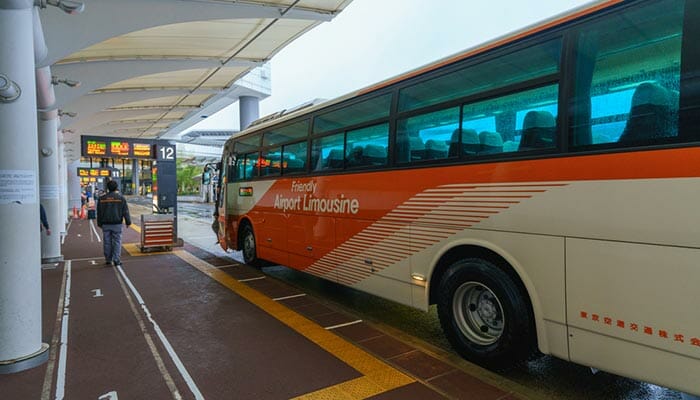
As a tourist, you’re most likely to be using the long-distance buses which travel from city to city (called inter-city services). Occasionally, you may find yourself needing to take a local bus but this is probably going to be in a smaller city where you don’t have other transportation options like the subway. Local buses run between and within smaller towns and cities, however, larger cities do have their own local bus networks as well, it’s just that with other very good alternatives, you’re less likely to need to use these in somewhere like Tokyo.
Airport Buses are also very common in Japan, providing good and affordable options for traveling to and from a city’s airport, stopping at major hotels as well as bus and train stations. Airport shuttle buses are therefore an affordable and convenient way of getting from the airport to the city, often with discounts for foreign tourists.
Long-Distance Highway Buses
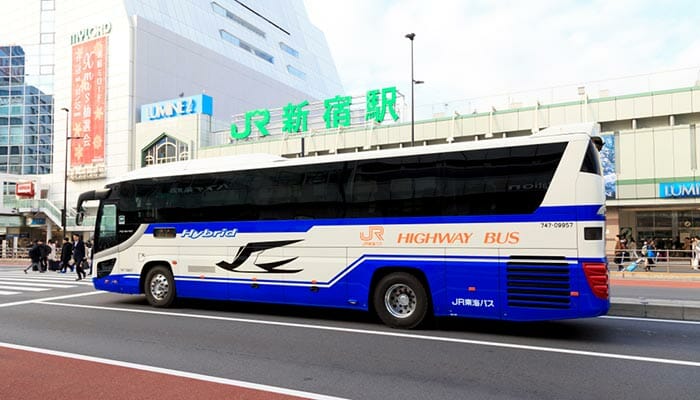
As you’re most likely to want to use long-distance highway buses in Japan, we’ll focus our information on these. You may think that with such a great railway network and the high-speed shinkansen trains available to whisk you from city to city, that there wouldn’t be much of a market for long-distance buses; well, you’d be wrong! In fact, demand for these buses has gone up as more bus companies entered the market for the most popular routes in the country, resulting in lots of ticket pricing competition that has helped to keep ticket prices even lower. After all, the biggest advantage of traveling by bus is the more affordable price when compared to the shinkansen, so if prices can be lowered even more, it’s not surprising that demand has gone up.
So, there are many long-distance bus companies you can choose from in Japan. Funnily, the largest operator is Japan Railways (JR) as they have the largest network of highway buses. Although they’re good because they have an extensive network, buses in the JR Group will tend to be more expensive than their competitors, so not so great if you’re looking for the best cost saving. Also, JR buses usually arrive and depart from train stations rather than from bus stops. This could be seen as an advantage or a disadvantage. They’re designed this way to be able to link up with railway services, so it’s good if you need to get on a train, but maybe not so good if you wanted to get off the bus somewhere else in the city.
Another potential advantage with traveling on JR Highway Buses is that your JR Rail Pass may be valid for travel on the buses. However, it is definitely not accepted on all highway buses even though it’s accepted on a lot of their local buses, so don’t rely on your pass for these long-distance buses. Having said this, there are bus passes available with some of the bus companies anyway, so you could buy a pass specifically for use on the buses rather than the trains, but more on that below.
Willer Express is another large operator with a big network of routes. They have a very good reputation and are always recognizable by the pink color scheme on their buses! There are too many other companies to list them all here, but if you want to do a quick comparison between bus operators, types of bus, and cost of tickets, a great place to compare services and see traveler reviews is on the website 12Go.asia. Type in the route you want to travel and you’ll see a long list of available bus companies with photos, so you can easily compare each bus, decide on which one you want, and book online. This can save you a lot of time and hassle over what it would take to individually look up all of these bus companies.
Japan Bus Travel Ticket Types
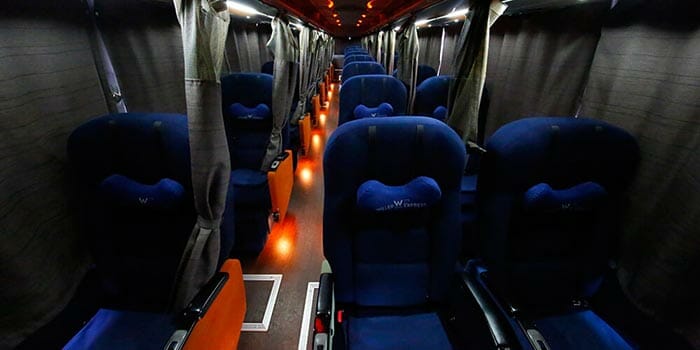
When you’re browsing your different options for traveling by bus in Japan, you’re going to see quite a variation in prices of tickets. Two different bus companies could be operating exactly the same route and get from A to B in pretty much the same time, yet one of those could cost about double what the other costs. The difference is prices is down to two things – first, the reputation of the bus company, and second, the level of comfort they are providing.
It’s important to know that the vast majority of long-distance buses in Japan will travel overnight, so do bear this in mind when you’re comparing costs. Traveling overnight saves you the cost of a night in a hotel as you’ll be on the bus, sleeping (hopefully!), so you may be happy to pay more knowing that you’re getting both your transportation and accommodation wrapped up in one affordable package!
So, what are the different bus ticket options? Well, they can vary greatly. Some of the most expensive ones get you a ticket on a bus that has far fewer seats than others. Premium services usually mean there are only 2 or 3 seats per row compared to the usual 4 seats, and seats can recline a long way, or a step above this could even get you a seat behind a private sliding door or a seat on a bus where there are only a few seats in total, giving you a really exclusive service.
Where to Buy Your Tickets for Bus Travel in Japan

You’re not limited to having to buy your tickets in just one place, such as from the bus terminal. In fact, there are multiple ways you could buy your bus tickets for Japan, including from the bus company’s own website, or from a travel agent’s website, or you could ask your hotel concierge to book them for you, if this is an option. As we mentioned above though, a great place to compare multiple bus companies and ticket prices is on 12Go where you can book online and get instant confirmation. Going this way will save you a lot of time over having to look up each individual bus company and find their schedules and routes.
Buying individual tickets is great if you’re only taking one or two trips by bus in Japan, or if you’re not sure of your plans, but remember, there are also bus passes available to foreigners that could help to save you money if you are going to be traveling by bus a number of times. Don’t miss our guide Nagoya to Tokyo.
Willer Express, for example, sells the Japan Bus Pass for use on their buses. Good if you want to save money, but there are restrictions such as black-out dates and only being able to go on buses with the regular four seats to a row.
Japan Bus Lines sells the JBL Pass. This has the advantage of being available to use on a number of different bus companies who are affiliated with the JBL network, giving you extra choice when it comes to scheduling. You can use this pass on buses with 3 or 4 seats per row and there are far fewer restrictions when it comes to days you can travel. So, if you’re going for a bus pass, be sure to check what the restrictions are as you may find it won’t actually be helpful for when and where you’re planning to go.
Traveling by bus in Japan is safe, affordable and convenient with the only real downside being the time it can take to get from city to city, especially when compared to the expensive shinkansen trains. But, if you’re looking for affordability, saving yourself a night in a hotel and traveling overnight on a bus can be a great option.
